Ink, Press, Inspire
Part 3: A Practical Guide to Getting Started
In this third installment of our detailed guide to integrating printmaking into the classroom, we explore the approaches and methodologies of four educators: Mrs. Fish, covering the high school level; Mrs. Hess, representing middle school; Dr. Debi Bober, focusing on early elementary grades; and Mrs. Anderson, offering insights from a Pre-K standpoint. This part emphasizes strategies for tailoring learning to accommodate every student, ensuring inclusivity and engagement across all classroom environments.
Fostering Student Autonomy in Printmaking
Fostering student autonomy and enhancing learning through peer interactions stand as pivotal pillars in cultivating an environment of creativity and mutual support; the following strategies encourage students to independently explore their artistic talents while benefiting from the collective wisdom and feedback of their peers.
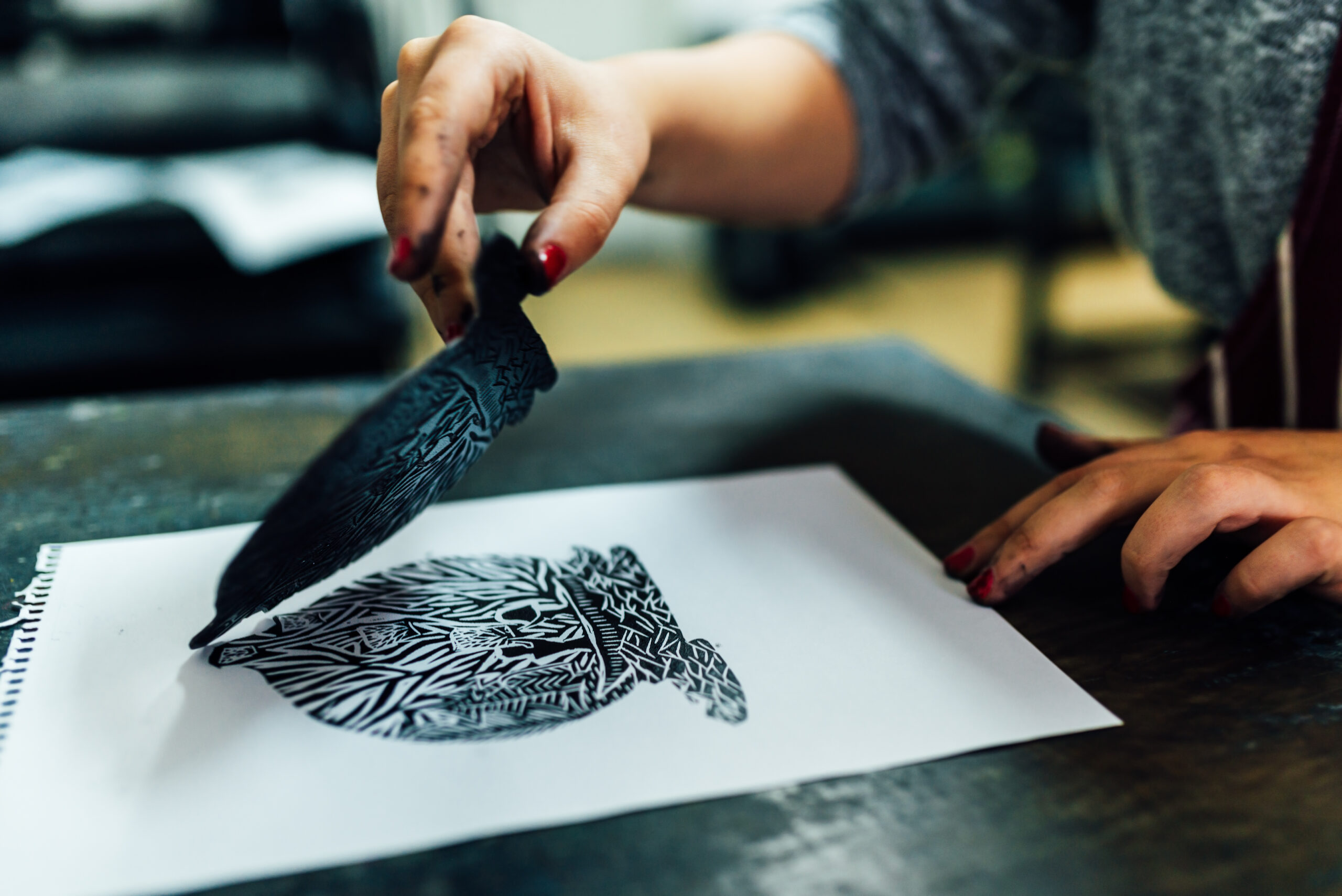
Dr. Bober emphasizes a streamlined approach to instruction, aiming to “slim down the instruction to the bare minimum.” This philosophy ensures that students have ample space to experiment and navigate the printmaking process on their own terms, thereby fostering a sense of independence and confidence in their artistic decisions.
Echoing this sentiment, Mrs. Hess advocates for student-led creativity, firmly believing that “Your way of doing it is the best way to create.” She encourages students to build upon the foundational techniques she introduces, suggesting that even simple embellishments can transform a basic project into something spectacular. Her teaching method highlights the ease with which personal flair and creativity can be incorporated into printmaking, using basic elements like lines and shapes to create impactful art.
Peer Interaction as a Catalyst for Learning
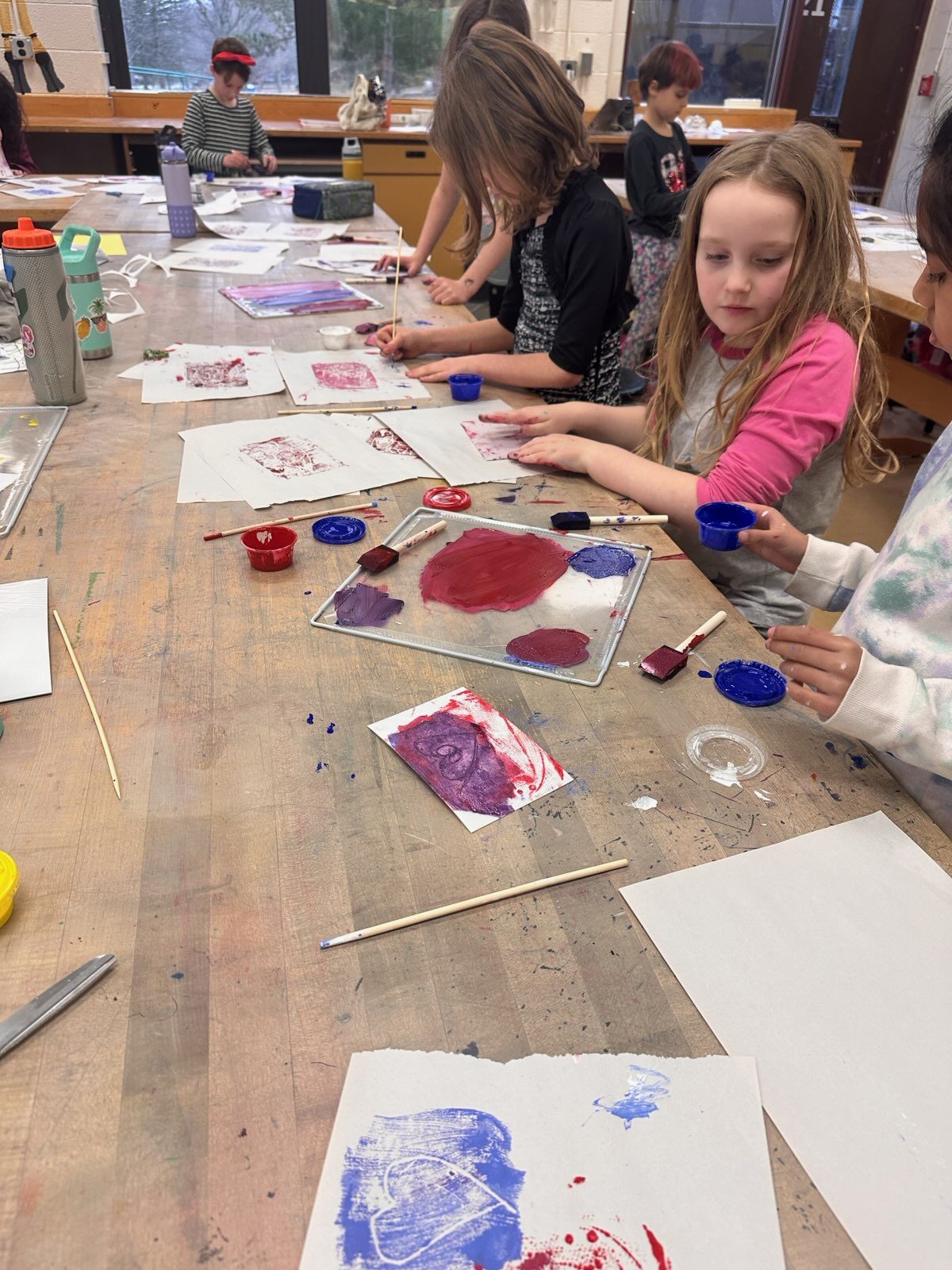
The role of peer-to-peer learning in the printmaking classroom cannot be overstated. Dr. Bober champions an open design process, where students are encouraged to experiment freely with their printmaking projects. This open-ended approach allows for the older students to tackle more complex designs, while younger learners are guided to keep their projects straightforward. Crucially, Dr. Bober notes the importance of peer assistance, where students are encouraged to help each other through challenges, thus reinforcing a collaborative learning environment.
Mrs. Anderson underscores the value of mutual observation and feedback among students. By closely watching their peers and conducting spot checks, students learn to refine their techniques, ensuring clean impressions and even ink distribution. This collaborative oversight fosters a learning community where students feel supported by their peers.
Dr. Bober also observes how the ambient backdrop of instrumental music in her art room facilitates a continuous exchange of ideas and feedback among students. This setting allows for a natural flow of conversation, with students actively participating in peer critiques, sharing inspirations, and offering compliments, thereby enhancing the collective learning experience.
Moreover, Mrs. Fish introduces an innovative strategy by involving advanced students in teaching printmaking techniques to their juniors. This practice not only leverages the expertise of more experienced students but also bridges the learning gap between different grade levels, enriching the educational experience for all involved.
Through these strategies, educators have created an empowering ecosystem within the art classroom, where autonomy and peer interaction synergize to advance student learning in printmaking. This approach not only equips students with technical skills but also instills in them the values of independence, collaboration, and creative expression.
Fostering Reflection and Feedback Across Grade Levels
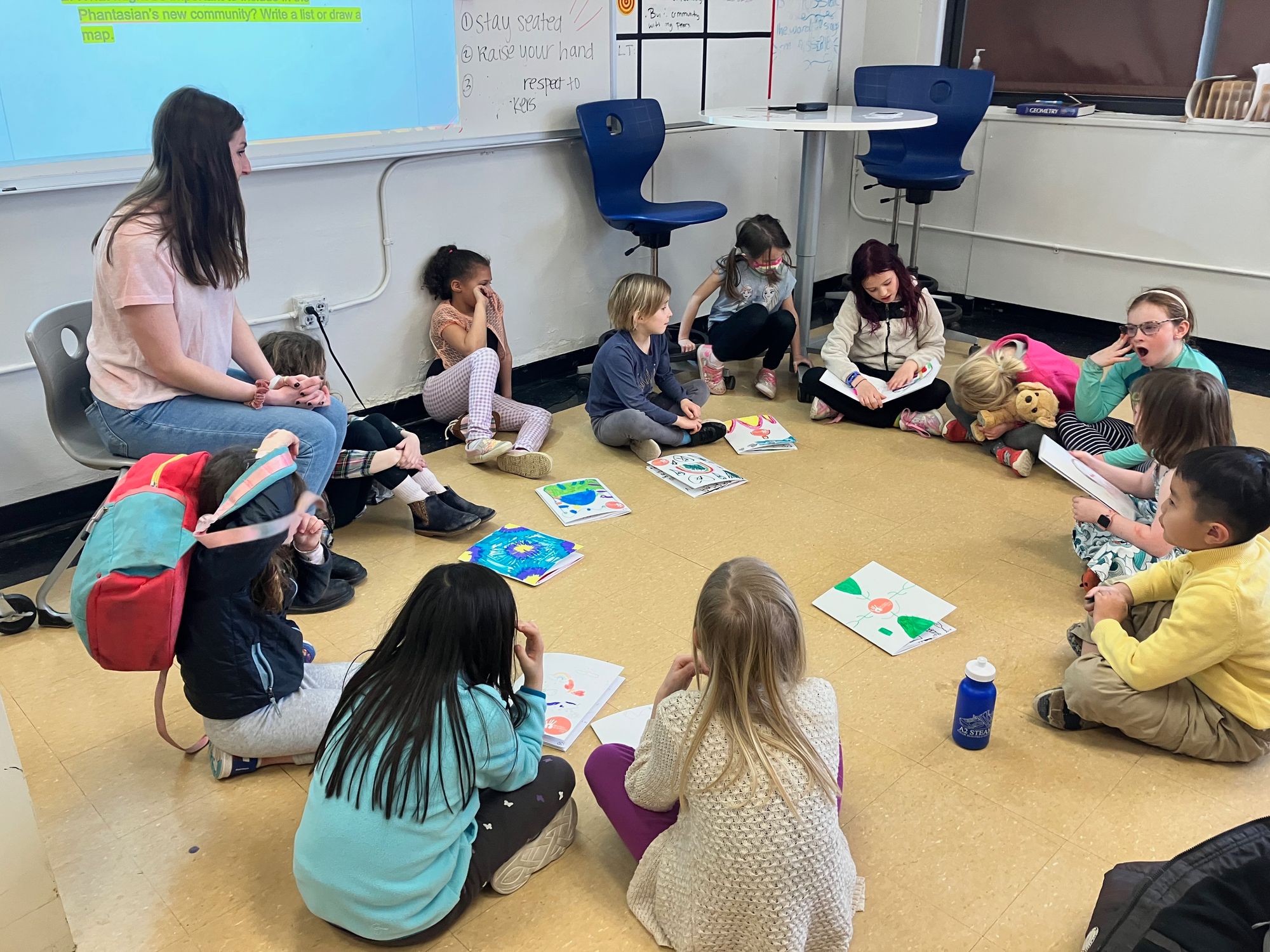
Dr. Bober implements gallery walks for younger students, creating a space for spontaneous admiration and positive reactions to peer artwork. This method allows for a shared experience of discovery and appreciation, with the younger audience expressing excitement and wonder through their reactions. For the older students, she orchestrates more structured critique sessions, using a projector to showcase work anonymously, thereby encouraging constructive feedback while highlighting educational moments within the artwork.
Echoing the importance of immediate feedback, Mrs. Anderson incorporates a strategy where each student is tasked with giving a peer one compliment and one constructive suggestion. This approach not only builds a culture of positive reinforcement but also gently introduces the concept of constructive criticism, essential for artistic development.
Mrs. Hess introduces the TAG method for her 5th-8th graders as a sophisticated form of reflective assessment. By encouraging students to “Tell something you like, Ask a question, and Give a suggestion or another compliment,” she nurtures a balanced view of critique, fostering an environment where students learn to appreciate art’s nuances and consider areas for improvement thoughtfully.
Addressing the unique challenges of high school students’ self-consciousness, Mrs. Shannon adopts a casual critique format. Students display their favorite prints on a classroom “clothesline,” then share their reflections based on a prepared rubric. This method reduces the pressure of public speaking and creates a laid-back atmosphere for sharing and reflection.
Assessing Success and Self-Assessment Techniques
At the preschool level, Mrs. Anderson focuses on the tangible outcomes of printmaking projects, prioritizing the cleanliness and overall quality of the prints. Ensuring that prints are smudge-free and evenly inked is essential, setting a foundational standard for young artists to understand the importance of presentation and meticulousness in their work.
Transitioning to the high school context, Mrs. Fish elevates the concept of self-reflection through the introduction of a “Printmaking Portfolio.” This compilation, which includes at least two identical prints alongside an experimental piece, encourages students to engage in self-assessment against specific criteria. This portfolio not only serves as a comprehensive showcase of their skills and creativity but also instills a sense of responsibility and self-evaluation in their artistic journey.
Here are some examples of how Mrs. Fish has students self-assess:


By incorporating these varied approaches to presentation, reflection, and assessment, educators create a rich, supportive, and dynamic learning environment. Students are guided to not only develop their technical skills but also to engage in critical thinking about art, fostering a deep appreciation and understanding that will enrich their educational experience and personal growth in the arts.
Overcoming Initial Hesitation and Fostering Engagement

Mrs. Hess captivates her students’ interest through hands-on demonstrations, showing how simple objects can be transformed into artistic tools: “Take the simple tp roll? Pinch one end…now it is a flower petal or a leaf…,” she explains, illustrating the potential for creativity in everyday items. Her approach not only demystifies the art-making process but also excites students about the possibilities, ensuring that “even the most timid of students…will get excited enough to try.”
Mrs. Fish takes a slightly different approach by showcasing student work and conducting live demonstrations, emphasizing that “even kids CAN do this.” This not only illuminates the magic of printmaking but also instills a sense of urgency and enthusiasm among students eager to reach the final step of their own projects.
Ms. Anderson suggests pairing students and having them swap papers periodically to stimulate creativity, stating, “It will start their ideas to flow, and maybe an image will develop.” This method, along with using ready-made stamps, provides a gentle nudge for students hesitant to create their print images.
Mrs. Hess shares her own personal challenges with drawing, “This knowledge seems to encourage all to try from their own level, knowing that there are no failures unless you give up”. Her transparency about her own artistic journey reinforces the notion that art is about expression and growth, not perfection.
Embracing Differentiation and Celebrating Diversity in Skills
Dr. Bober teaches students across a broad spectrum of abilities, noting that “with printmaking, students can make any design, even if it is a scribble or a single line.” This inclusivity ensures that students with varying abilities can fully participate and find success in the art room.
Mrs. Fish remarks on the whimsical nature of printmaking, which allows for a broad range of outcomes based on how ink is transferred, making it suitable for students with different motor skills. She further encourages advanced students to explore more complex designs, enhancing the depth and variety of projects within the classroom.
Ms. Anderson shares an innovative lesson extension where students experiment with printing in different ways. “All the prints were printed with black ink on red construction paper. They dried overnight and the next day we printed with water-based gold or silver ink […] they only turned them upside down to print the second color” This approach not only diversifies the learning experience but also showcases the versatility of printmaking as a medium.
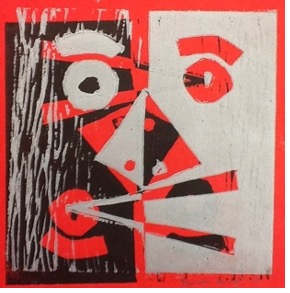
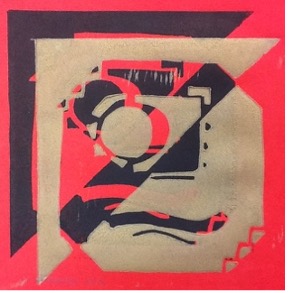

Both Dr. Bober and Mrs. Hess emphasize the power of praise and positive reinforcement. By focusing on what students are doing well and encouraging them to explore empty areas of their projects or embellish existing elements, they keep students engaged and motivated.
Overcoming Initial Hesitation and Fostering Engagement
Celebrating student achievements in printmaking fosters a sense of accomplishment and pride among students while connecting them to the broader community.
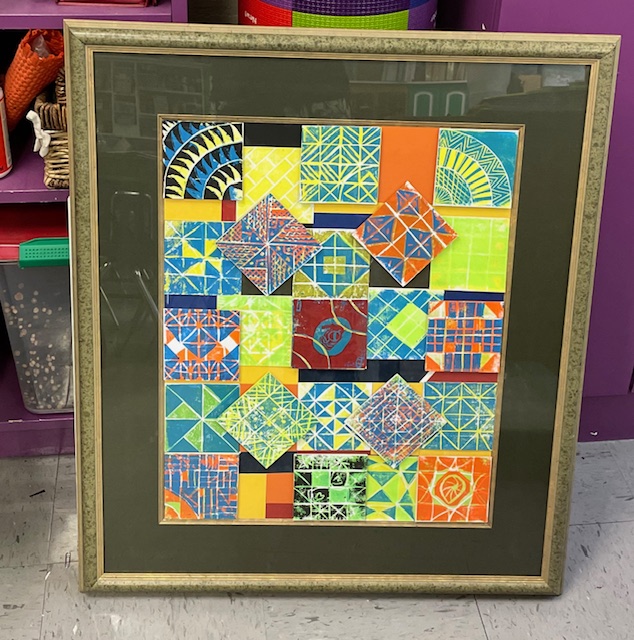
Auction piece by 8th grade students in Ms. Hess’ school. Created by 23 students with foam core to raise some of the pieces, and a repurposed goodwill frame.
Showcasing Art in Early Education
In the early stages of education, such as Pre-K and Kindergarten, teachers like Mrs. Hess employ creative strategies to display student artwork. She utilizes bulletin boards, the digital platform Artsonia, and glass windows as mediums to present the young artists’ creations. This approach not only highlights the students’ creativity but also bridges the gap between the classroom and the outside world, allowing families and the local community to engage with the art. Mrs. Hess notes the effectiveness of these methods in celebrating children’s artwork, stating, “This approach not only celebrates the children’s creativity but also connects them with their families and broader community through their artwork.”
Ms. Anderson shares her enthusiasm for organizing art shows, offering practical advice for art display even in the absence of traditional materials. By mounting prints on black paper and compiling a notebook of the class’s work, she ensures that each student’s efforts are preserved and acknowledged. These exhibitions extend beyond the classroom walls, with Ms. Anderson facilitating student participation in competitions to further highlight their talents.
Display Strategies for Elementary to Middle School
As students progress to early elementary levels, the display of artwork evolves to include placements in school offices and collaborative projects, demonstrating the integral role of visual arts in educational development. Middle school educators, such as Mrs. Hess, find unique ways to share student artwork, including rotating displays and incorporating art into significant school events like auctions. These practices not only underscore the value of art in education but also foster a community spirit and a sense of collective accomplishment.
High School Students: Blending Traditional and Digital Showcases
At the high school level, Mrs. Fish explores a combination of traditional and digital avenues to celebrate student artwork. By providing each student with an account on Artsonia.com, she offers them a platform to share their work with a global audience, thereby expanding the reach and impact of their art. Mrs. Fish elaborates on the benefits of this digital showcase, allowing “friends, family, and art enthusiasts worldwide to appreciate and comment on their work.”
In addition to online galleries, Mrs. Fish integrates student artwork into tangible projects and community initiatives, such as book illustrations that culminate in a published book donated to local preschools. This not only showcases the students’ artistic talents but also promotes collaboration and connectivity between different age groups. Selected works are also displayed in various physical venues, such as school hallways and community arts festivals, providing students with the invaluable experience of public recognition.
The strategic use of social media further amplifies the visibility of student artwork, engaging a wider audience and shining a spotlight on the students’ creative achievements. Through these diverse methods, high school educators like Mrs. Fish ensure that art education is not just about creating art but also about sharing and celebrating it within and beyond the school community.
Through these layered and thoughtful approaches, educators across all levels of schooling effectively highlight the importance of printmaking in the curriculum, offering students various platforms to showcase their work. This comprehensive showcase strategy not only elevates the students’ sense of pride and accomplishment but also underscores the significance of visual arts in fostering a creative, connected, and expressive community.

Mrs. Hess, St. Francis of Assisi School; Triangle, VA; PreK-8th grade Art;
Dr. Debi Bober, Cubberley TK-8, LBUSD, Long Beach, CA, TK-8 Art Specialist;
Mrs. Anderson, Hardin Valley Academy & Knoxville Museum of Art Knoxville, Tennessee; Pre-K-8
